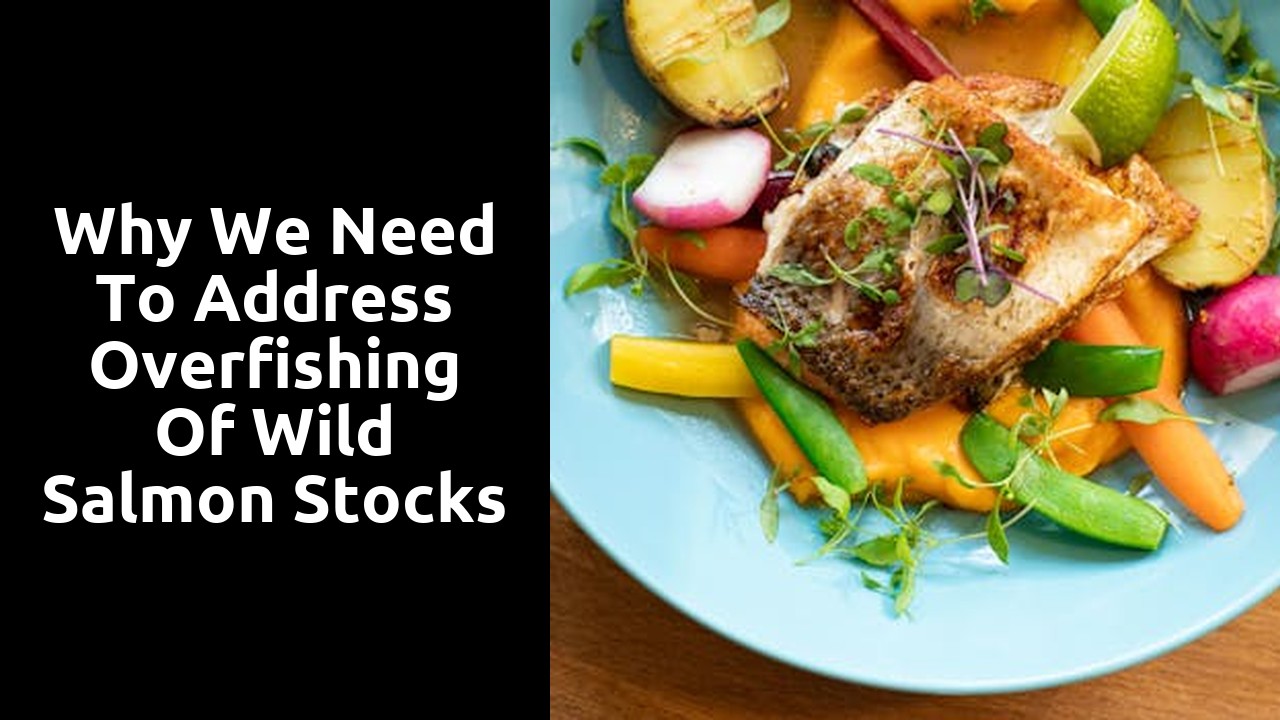Why We Need to Address Overfishing of Wild Salmon Stocks

Benefits of Wild Salmon Conservation
The conservation of wild salmon stocks is crucial for maintaining the delicate balance of our ecosystem. By protecting these iconic fish, we are also safeguarding the diverse array of species that depend on them for survival. Salmon play a critical role in the food chain, serving as a vital source of nutrition for other wildlife, such as bears, eagles, and otters.
Furthermore, the preservation of wild salmon populations helps to sustain the health of our rivers and oceans. These fish are known as a keystone species, meaning their presence or absence significantly impacts the overall health and biodiversity of their environment. By ensuring the survival of wild salmon, we are actively supporting the resilience and sustainability of our aquatic ecosystems.
Promotion of Biodiversity
Conservation of wild salmon stocks is imperative for the preservation of biodiversity in aquatic ecosystems. Salmon play a crucial role in the food chain, serving as both predators and prey. By maintaining healthy salmon populations, we help sustain the delicate balance of marine life. A decline in wild salmon numbers can have cascading effects on other species, leading to ecosystem instability and loss of biodiversity.
Furthermore, wild salmon are vital for the nutrient cycling of freshwater environments, enriching the ecosystem and supporting a wide variety of plant and animal species. Their annual spawning migrations bring essential nutrients from the ocean back to rivers and streams, nourishing the surrounding habitats. Protecting wild salmon ensures the continuation of this natural fertilisation process, ultimately contributing to the overall health and biodiversity of our waters.
Alternative Protein Sources
Salmon, being a key source of protein for many communities, faces the threat of overfishing and declining wild stocks. In response to this challenge, exploring alternative protein sources becomes imperative. One promising avenue is the advancement of plant-based protein options that can help reduce the pressure on wild salmon populations while still providing essential nutrients.
Moreover, the development of sustainable aquaculture practices offers another viable solution to meet the demand for protein without further depleting wild salmon stocks. By investing in environmentally sound aquaculture methods, we can ensure a more stable and secure protein source for the future while also alleviating the strain on our natural ecosystems.
Potential of Aquaculture
Aquaculture, the practice of farming fish in controlled environments, offers a promising solution to the pressing issue of overfishing wild salmon stocks. By cultivating salmon in fish farms, we can reduce the strain on natural populations and help to restore balance to marine ecosystems. This method allows us to meet the high demand for salmon without endangering the survival of wild species.
Furthermore, aquaculture presents opportunities for innovation and technological advancements in sustainable fish farming practices. With ongoing research and development, we can improve the efficiency of aquaculture operations, minimise environmental impacts, and ensure the long-term viability of salmon production. By embracing aquaculture as a complementary approach to wild salmon fishing, we can work towards preserving the health of our oceans and safeguarding the future of this valuable species.
Indigenous Perspectives on Salmon Fishing
Indigenous communities have relied on salmon fishing for sustenance, cultural practices, and economic livelihood for generations. For many Indigenous peoples, salmon holds significant spiritual and cultural importance, playing a central role in ceremonies, traditions, and storytelling. The connection between Indigenous communities and the salmon goes beyond mere sustenance; it is a deep-rooted bond that shapes their identity and way of life.
Salmon fishing is not merely a means of procuring food for Indigenous peoples; it embodies their respect for nature and their intricate understanding of the ecosystem. Many Indigenous communities have sophisticated, sustainable fishing practices that have been passed down through oral traditions. The preservation of wild salmon stocks is crucial not only for their physical sustenance but also for the spiritual and cultural well-being of Indigenous communities.
Cultural Significance
Salmon holds a revered place in the hearts and culture of many indigenous communities around the world, especially in regions where the fish is plentiful. For these communities, the annual salmon run represents not just a source of sustenance, but a deeply embedded tradition that symbolises resilience, heritage, and interconnectedness with the natural world. The passing down of fishing knowledge and practices from one generation to the next not only strengthens familial bonds but also reinforces the spiritual and cultural significance of salmon fishing.
Incorporating salmon into rituals, ceremonies, and feasts has been a longstanding tradition among indigenous peoples. The fish is not merely a food source but a symbol of respect, gratitude, and reciprocity with nature. The act of catching and sharing salmon carries profound symbolic meaning, serving as a reminder of the respect and harmony that indigenous communities strive to maintain with their environment. The cultural significance of salmon fishing extends far beyond the nutritional value of the fish itself, encapsulating a rich tapestry of beliefs, customs, and practices that honour the enduring relationship between mankind and the natural world.
Related Links
The History of Sustainable Salmon FishingWhy Sustainable Seafood Choices Matter
The Ultimate Guide to Sustainable Seafood
Review: The Best Sustainable Salmon Brands